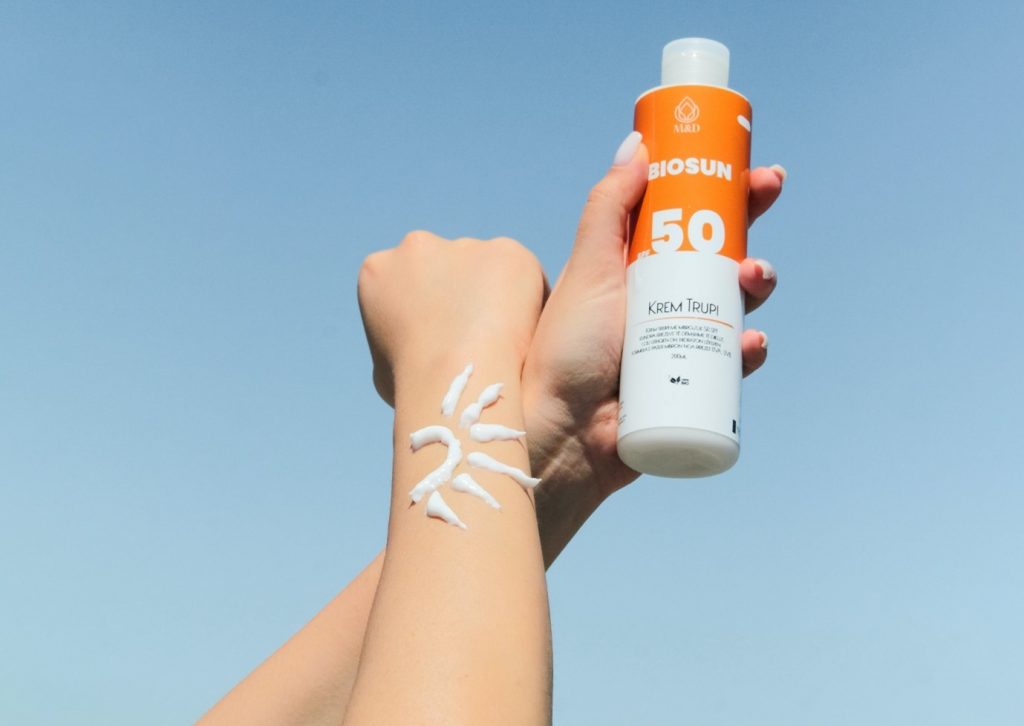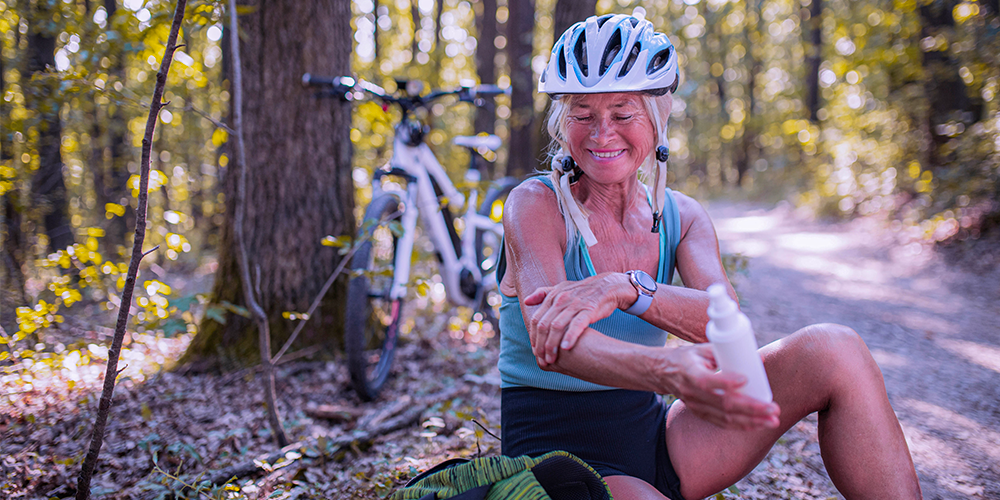Running and cycling often involve prolonged exposure to the sun, especially in summer. But what is the best way to protect yourself from direct sunlight? In an interview with Prof. Dr. Christian Surber, we had the opportunity to clarify a few points on the subject of sun protection and exercise.

Prof. Dr. Christian Surber, Doctor of dermatopharmacology and hospital pharmacology; Associate Professor and Research Fellow at the dermatology clinics of the University Hospitals of Basel and Zurich. His research focuses on the prevention and treatment of skin cancer. He is an expert on sun protection for the Swiss Society of Dermatology and Venereology.
1) What are the problems related to sun protection and outdoor sports?
Activities such as cycling, hiking or running are often done in direct sunlight, so it is important to know how to protect yourself properly, especially in the summer. One of the main problems is the large amount of sun protection that is lost when swimming or wiping off sweat. The “climate” and ” wear and tear” factors can only be neutralized by regular reapplication of sunscreen. Wearing caps, sleeved clothing, gloves and sunglasses is also a very effective means of protection.
2) Which sun protection factor is most adequate? Which SPF should be used under which conditions?
For outdoor athletic activities, it is recommended to use products with a sun protection factor (SPF) of 50 and above (50+). In addition to SPF (the main performance characteristic for protection in the UV-B range), it is important to ensure that the product also protects in the UV-A range. This can be recognized by the UV-A logo on the packaging – a circle with “UVA” written inside.

3) How do I apply sun protection correctly?
The sun protection performance claimed on a product is based on laboratory tests performed on volunteers. In these tests, the sun protection performance is measured with 2mg of product per cm2 of skin. Normally, we apply half (or less) to the skin. In addition, important areas of the skin are often overlooked (such as the ears and forehead). It is advisable to apply the sun cream twice before going out in the sun (the second time, it is necessary to cream the forgotten areas!).
4) Are there any sport-specific products on the market with water- and sweat-resistant formulas?
The water resistance of a sun protection product is evaluated by means of a standardized test on volunteers in a laboratory. If, after two 20-minute periods in the pool, the sun protection factor is still 50% of the declared SPF value, the product is classified as “waterproof”; after four 20-minute periods, the classification is “extra waterproof”. The measurement of perspiration resistance is not standardized. However, these classifications should not be relied upon blindly, and it is recommended to reapply the sunscreen after each time you dry.
5) Is sunscreen only effective after half an hour?
It is often recommended that sunscreen be applied to the skin 20 to 30 minutes before sun exposure. People mistakenly conclude that sunscreen is only effective after this time. The reason for this recommendation is quite different! Most sunscreens contain volatile components such as water and alcohol. Only after these components have volatilized does the sunscreen product “stick” to the skin.
6) Can I stop using sunscreen once I am tan?
Tanning is a protective mechanism of the skin against UV rays. However, the protective power of this browning is very weak. Despite the browning, you should never stop protecting yourself from the sun with sunscreen. Always use products with the highest possible sun protection factor (SPF 50+) during outdoor sports activities.
7) It is often feared that very high sun protection may compromise the production of vitamin D in the skin: what is the truth?
Sunscreens do not interfere with the production of vitamin D in the skin because they never completely block UV rays from entering the skin (for more information, watch the film “Sunscreens: SPF50 protects five times better than SPF10“). In addition, sunscreens are almost never applied in the amount required (2mg/cm2) to achieve the indicated sun protection factor. There are also many situations in daily life where the skin is exposed to moderate sunlight that allows for the production of vitamin D. The ability of the skin to produce vitamin D decreases with age. The “missing” vitamin D can easily be supplemented (e.g. with Vi-De 3® drops).
8) How do you know if your skin is damaged?
Skin with photodegradation appears mainly on the face, ears, bald head, neckline, forearms and back of the hands with brown and white spots. Later on, the signs of skin aging become more and more evident. Various forms of skin cancer can also develop. Light-damaged skin can be visualized in detail with a UV camera. To learn more, watch the YouTube film “How The Sun Sees You”.
9) Are nanoparticles in sunscreens dangerous?
Sunscreens are present in sunscreen products either dissolved as single molecules or suspended as nanoparticles or microparticles. Most sunscreen products on the market contain dissolved filtering molecules. Unfortunately, there is a general fear of many things that contain the word “nano”. In the context of sunscreens, it is often suspected that the particles penetrate the skin and cause illness in the body. Unlike dissolved filtering molecules, sunscreens that are nano- or micro-particles CANNOT penetrate the top layer of our skin (stratum corneum). The nano or micro-particles are too large compared to the dissolved filter molecules. Therefore, sunscreen products that contain nano- or micro-particles are among the most reliable products.
10) Are there any products you would not recommend?
There is a wide variety of products available today. The most important thing for any consumer or patient is to find a product that feels good and is comfortable to apply to the skin. In general, spray sunscreen products are not recommended. First, when you spray, you lose about one-third of the product in the atmosphere; second, many spray products contain components that evaporate quickly and the product remains concentrated only locally; and third, contrary to what is advertised, even spray products usually need to be applied to the skin by hand.
We would like to thank Prof. Dr. Christian Surber very much for the interesting conversation and the insightful facts!
